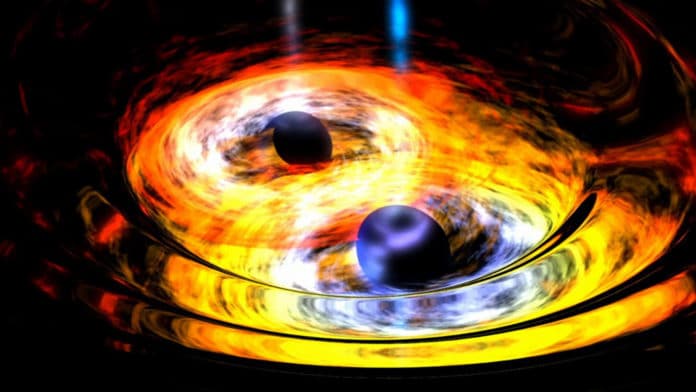Universe has an abundance of gravitational wave sources. Recently, an international team of scientists unveiled a tsunami of gravitational waves. This discovery is the most significant number of gravitational waves ever detected.
Scientists detected 35 new gravitational waves. These waves were formed by merging black holes or neutron stars and black holes smashing together. The observation was made by the LIGO and Virgo observatories between November 2019 and March 2020.
This brings the total number of detections to 90 after three observing runs between 2015 and 2020.
Distinguished Professor Susan Scott from the ANU Centre for Gravitational Astrophysics said, “The latest discoveries represented ‘a tsunami’ and were a significant leap forward in our quest to unlock the secrets of the Universe’s evolution.”
“These discoveries represent a tenfold increase in the number of gravitational waves detected by LIGO and Virgo since they started observing.”
“We’ve detected 35 events. That’s massive! In contrast, we made three detections in our first observing run, which lasted four months in 2015-16.”
“This is a new era for gravitational wave detections, and the growing population of discoveries is revealing so much information about the life and death of stars throughout the Universe.”
“Looking at the masses and spins of the black holes in these binary systems indicates how these systems got together in the first place.”
“It also raises some fascinating questions. For example, did the system originally form with two stars that went through their life cycles together and eventually became black holes? Or were the two black holes thrust together in a very dense dynamical environment such as at the center of a galaxy?”
Distinguished Professor Scott, who is also a Chief Investigator of the ARC Centre of Excellence for Gravitational Wave Discovery (OzGrav), said the continual improvement of gravitational wave detector sensitivity was helping drive an increase in detections.
“This new technology is allowing us to observe more gravitational waves than ever before.”
“We are also probing the two black hole mass gap regions and providing more tests of Einstein’s theory of general relativity.”
“The other really exciting thing about the constant improvement of the sensitivity of the gravitational wave detectors is that this will then bring into play a whole new range of sources of gravitational waves, some of which will be unexpected.”
Journal Reference:
- R. Abbott et al. GWTC-3: Compact Binary Coalescences Observed by LIGO and Virgo During the Second Part of the Third Observing Run. ArXiv
